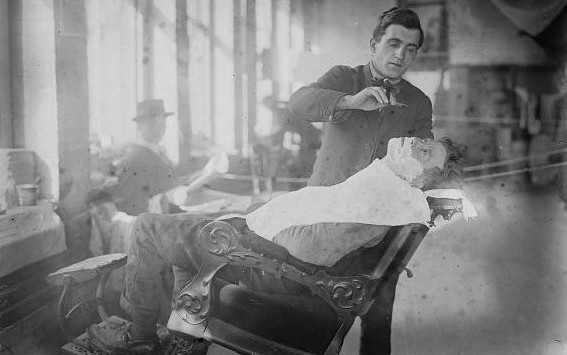THE BURGLAR WORE A SILK HAT (1892)
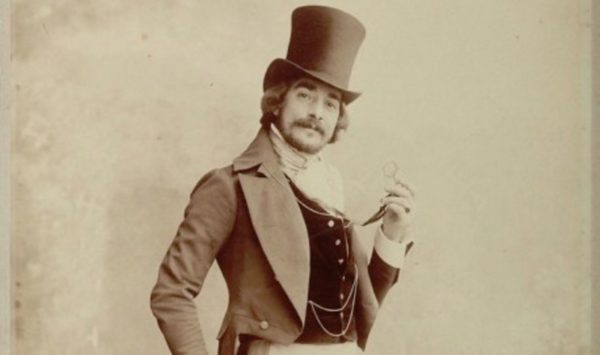
******************************************************************************************************************************** Brownstone Detectives investigates the history of our clients’ homes. The story you are about to read was composed from research conducted in the course of one of those investigations. Do you know the history of YOUR house? ******************************************************************************************************************************** “A burglar broke into the house of Martin Ficken, at 138 Van Buren Street, last night,” reported the the Brooklyn Daily Eagle on page six of its 8 February 1892 edition, “and carried off plated ware and clothing valued at $40.” The burglary must not have rattled Ficken’s faith in the neighborhood or the safety of his rented Stuyvesant Heights house, however, as two years later he would marry Frances Stillwell and she would move into the house to live with him there. Six years later, Ficken, a German-born grocer and veteran of the Civil War (he was a first sergeant of Troop F, Sixth New York Cavalry), would further signal his investment in Stuyvesant Heights when, in 1898, he, with Frances, purchased No. 138 Van Buren Street. The burglary must have at least caused Ficken wonder at the mental status of the burglar, though, as the newspaper further laid out not only what the burglar took – but what he left behind. “The thief,” the Daily Eagle continued, “took a derby hat from the rack and left in its place a new silk hat which was evidently too large for him, as a whole newspaper was folder and stuffed under the sweat lining.” Was the burglar prescient? Did he see […]
A CURE FOR WEALTH ON CLINTON AVE (1895)
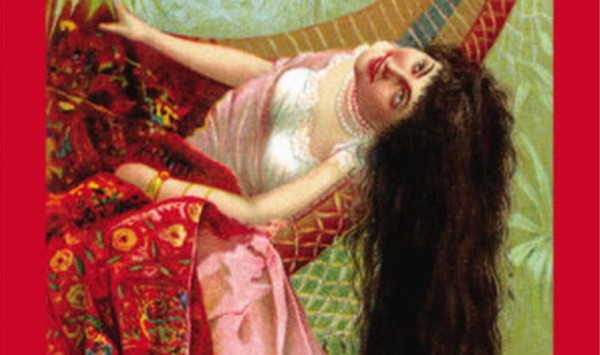
******************************************************************************************************************************** Brownstone Detectives investigates the history of our clients’ homes. The story you are about to read was composed from research conducted in the course of one of those investigations. Do you know the history of YOUR house? ******************************************************************************************************************************** Along an avenue shaded with tall oaks and plane trees once sat the home of a rich old recluse who’d been swindled of nearly all of her life’s savings in her declining years. A “tumble down” and “badly dilapidated old three story frame house,” the structure “stood forlornly upon the lot at 439 Clinton Avenue in Fort Greene,” noted the Brooklyn Daily Eagle. The roof of the house was “surmounted by a queer little cupola, and the whole structure looks as if it might fall in at any moment.” In short, the Eagle sardonically noted, the house looked as if the owner, Mrs. Caroline Barry, had lived in it ever since the death of her husband “without either painting it or repairing it in any way.” The Eagle was likely going a bit over the top with regards to the house’s condition, as it seemed much out of place situated between stately structures of brick and brownstone all along Clinton Avenue. But as the house has been gone for more than 100 years now, it is impossible to know what its actual state was for certain. What we do know, though, is what it looked like from a drawing done by the newspaper and from Sanborn Fire Insurance maps. From the […]
A BROOKLYN FIREBUG’S REIGN OF FURY (1899)
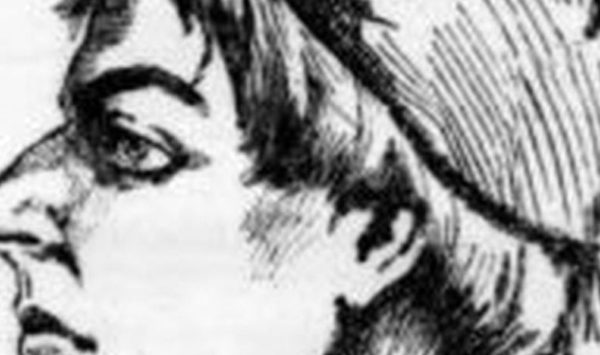
In February and March of 1899, someone was setting fires in crowded tenement houses in the eastern section of Stuyvesant Heights and Williamsburg. They started around the time that the Fire Department had classed the neighborhood of Broadway and Gates Avenue as “highly flammable.” In little more than a month, 14 suspicious fires were reported and, subsequently, doused by the department. The Brooklyn public was both fascinated and horrified by the story. Brooklynites began to watch their houses more closely and found themselves more discriminating regarding people on their street whom they did not know. Firebugs were not an unknown quantity, but this one was putting a good number of fires under his belt and fear into the heart of Brooklyn. DETECTIVE BECKER ON THE CASE! When Brooklyn Police tried to wrap their heads around the spate of arsons, wondering who could possibly be starting them and why, Detective Becker recalled a strange incident where a young Abraham & Straus delivery boy had, one day, bound and gagged himself and pretended to have been knocked unconscious by 12 thieves and had his weekly wages stolen. The boy had eventually admitted his act, but would not say why he had done it. As Brooklyn Police had nothing else really to go on, Capt. Ennis of the Ralph Avenue station detailed Becker to watch the youngster, Irving Taylor, Jr., to determine if he were somehow involved. Detective Becker knew that the 15-year-old was a smoker. He consumed eight to ten packs daily. […]
THE “GOODFELLAS” OF CUMBERLAND STREET
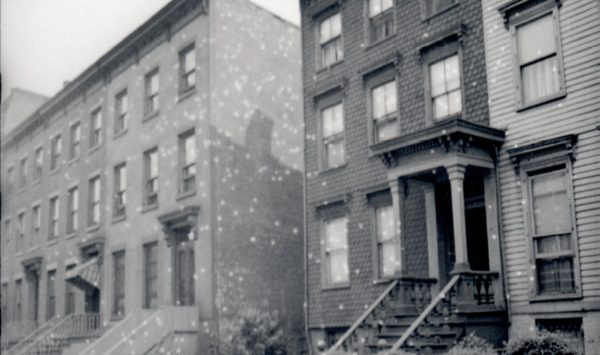
One of the Brownstone Detectives’ first House History Books, No. 231 Cumberland Street: The Story of a House, tells the story of an 1852 antebellum frame home just steps from Fort Greene Park. It’s an action-packed tome, replete with treachery, “poudrette,” “small art,” SROs, and the gangland figures from “Goodfellas.” Here is a brief timeline of the history of this single landmarked property, matched up with “spreads” from the book: THE HISTORY OF A BROOKLYN HOUSE The land beneath which No. 231 would someday rise, started out as a tobacco farm owned by the first Italian immigrant to New York, Pietre Cesare Alberti. The farmland would eventually be built upon in 1851-2, when builder John Ross constructed a row of three homes there. First owned by a woman with a tragic history, a melodrama involving treachery, another man, and an infant daughter – which became the gossip of the newspapers of the time – No. 231 was rented out throughout the the 1850s and 1860s, in addition to many returning Civil War veterans, to merchants and their small families. One of those merchants featured prominently in the founding of the Lafayette Avenue Presbytery Church. Before this, however, he had begun his interesting career as a Night Soil Man – starting a company which, amongst other “agricultural” endeavors, collected human excrement from the backyard privvies of Brooklyn, selling this “compost” to Long Island farmers as the appropriately – if euphemistically – named “poudrette.” The property was then owned by an immigrant, […]
THE DIRTY, JERKY, FOUL “L” TRAIN (1892)
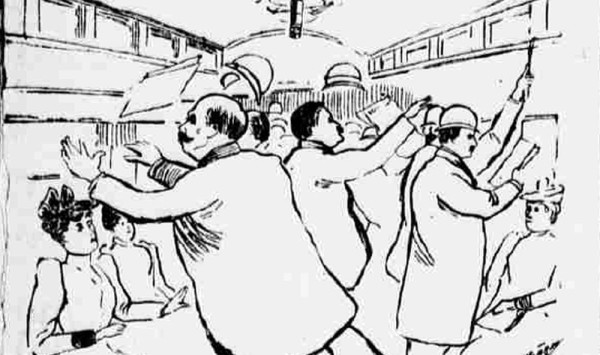
******************************************************************************************************************************** Brownstone Detectives investigates the history of our clients’ homes. The story you are about to read was composed from research conducted in the course of one of those investigations. Do you know the history of YOUR house? ********************************************************************************************************************************In 1892, the “L” Train was killing Brooklynites. At least that’s the impression you would have gotten if you were to read Joseph Pulitzer’s New York World in the early 1890s. The campaign that the newspaper developed to improve elevated service would have had you believe that the elevated train (the “L”) – which delivered passengers from the Brooklyn Bridge to their homes throughout the borough (and vice versa) – was just as liable to kill you as to get you safely home. If you had spoken to an “L” Train rider back then, too, you would have had further proof that all of this was true. Today, while the mode of travel and the specifics thereof, at their base, are different from those which we have at our disposal, many straphangers’ complaints concerning the slowness of the subway, the dirtiness of the cars and stations, and the lack of train cars, ring as true today as they did 125 years ago. Which begs the question, “Has anything really changed?” Here follows some of the prize-winning….ahem…..yellow journalism illustrations that may better illustrate the problems existent in 1892. “The crowding and pushing that you have witnessed to-night could be avoided if the Company would only put on more trains,” stated one rider. “I […]
THE “SCREAM” OF MACON STREET (1907)
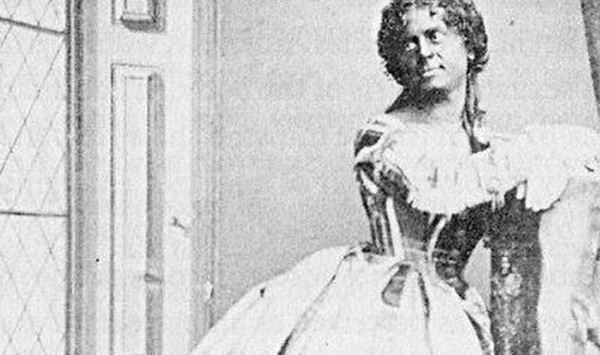
******************************************************************************************************************************** Brownstone Detectives investigates the history of our clients’ homes. The story you are about to read was composed from research conducted in the course of one of those investigations. Do you know the history of YOUR house? ******************************************************************************************************************************** Female “personators” seemed to bring out the passion in folks back in the day. Maybe there was less sexuality involved in the whole dressing-as-a-woman thing. Or maybe it was simply a matter of sexuality not mattering at all. Or, as some say, it was everything. But when “The Great Eugene” took the stage – and he took the stage always as a woman – men, in particular, seemed to find themselves singularly rapt in attention and admiration at the spell that the talented female personator was casting over them. BUILDING THE PERFECT IMPERSONATOR The Great Eugene, otherwise known simply as Eugene, was named Eugene D’ameli as a child. He was born on Manhattan in 1836, and, according to The New York Dramatic Mirror (the Broadway rag of the time), he made his first debut at the tender age of 17, playing what he would end up playing the rest of his career – a “prima donna” – a persona which “he improved and perfected until it was considered the best of its class.” His partner, “Johnny” Unsworth, of 700 Macon Street, recalled Eugene’s beginnings in the minstrel theatre. “Because he was so small and slight and built somewhat like a woman Gene started female impersonations, always in black face, as a […]
TINTYPE, OWNER, 738 MACON ST. (1892)
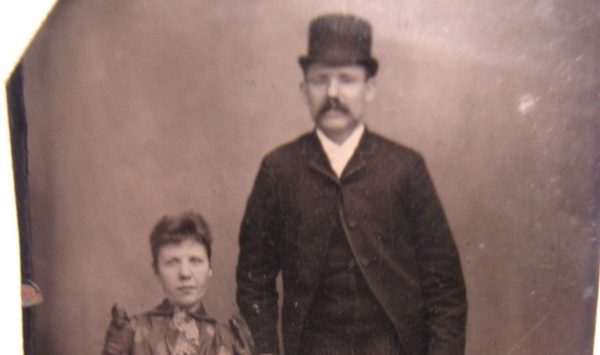
This is the oldest picture we tracked down of a former owner of 738 Macon Street, a house which was the subject of our first House History Book, “No. 738 Macon Street: The Story of a House.” A tintype, it was taken around 1892 at Macy’s in Manhattan, a standard location where people went to have such parlor photographs made. The subjects of the tintype are Martin Loftus and his wife, Rose. (These are the grandparents of the celebrated Aunt Patsy, who we tracked down during the writing of the book. Click the link to enjoy a short interview with her about her time in the 1940s on Macon Street in Bed-Stuy.) Then recently married, Martin and Rose were living at No. 32 Greenwich Avenue in Manhattan where Martin was working as an engineer. Around the turn of the century they would move with three kids (and one on the way) to a wood frame house at 293 Bainbridge Street in the Stuyvesant Heights section of Brooklyn. The house no longer exists, but neither does the wood mill that sat next door to it. Another 20 years later, in 1919, and their 3-generational family of nine would move into 738 Macon Street – where members of the Loftus family would live for 32 years. Follow @BrownstoneDetec ———————————————————————————————————————– The Brownstone Detectives The story you have just read was composed from extensive historical research conducted by The Brownstone Detectives. We perform in-depth investigations on the historic homes of our clients, and produce […]
A BEER CALLED MÜNCH (1904)
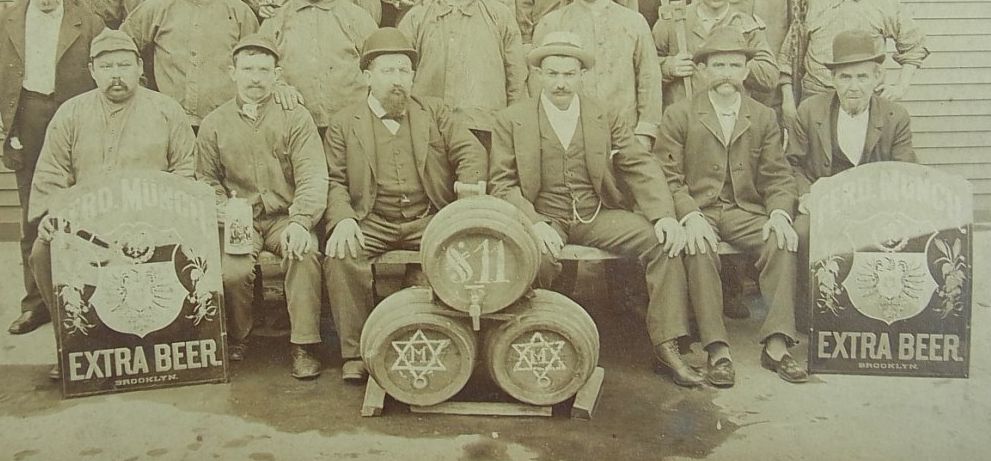
******************************************************************************************************************************** Brownstone Detectives investigates the history of our clients’ homes. The story you are about to read was composed from research conducted in the course of one of those investigations. Do you know the history of YOUR house? ******************************************************************************************************************************** One might wonder if a beer called “Münch” had at one time been on the receiving end of an unfortunate and slightly counter-intuitive moniker. Today, product names are usually selected based upon their abilities to stir some positive emotions – within the minds of the consumers – about their products. “Munch,” though, was not always an informal term describing a way of eating. More than 100 years ago, it was also a German name that was connected in the minds of many Brooklynites with a very satisfying “table beer.” THE MUNCH BREWERY The Ferdinand Münch Brewery, located at 277-299 Vernon Avenue from the late-1870s through to about 1920, when Prohibition spelled its end, satisfied the palates of Brooklyn, as a “family” beer, for more than 40 years. Housed originally within a building of old stone construction, Ferdinand Münch replaced the brewery building with a structure of brownstone and brick shortly after he purchased the property. Münch, though, would pass within the decade and leave his brewery to his sons, one of whom was William Münch. WILLIAM MUNCH AND HIS BROADWAY BUILDING In 1904, Sigmund Eisenbach, of 227 Gates Avenue, built a 4-story office building on the corner of Myrtle and Broadway, selling it to Ferdinand’s eldest son, William Münch, who had […]
THE SECOND HUMILIATION OF WARREN (1960)
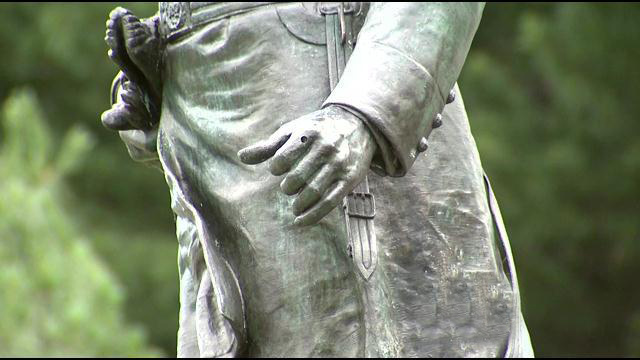
A number of New York City Parks Department statues are having their stolen swords replaced reported a DNAInfo story. The statues, most of which have had their their swords stolen (bayonets, and glasses, in some instances) during times of high crime, are now deemed worthy of replicas being cast. The Parks Department worries less now about the replicas being stolen themselves. I’ve often noticed one such statue in particular – the Kemble Warren statue at the Grand Army Plaza. First of all, why was it there? What had Warren, an engineer, done that could have been so critical to the war effort? Had he been a critical part of the attack at any actual battle? I figured that, as an engineer, he had – more likely – prepared a defense. But was that enough to receive a statue? KEMBLE WARREN – A HUMILIATION Gouverneur Kemble Warren, the engineer for whom the statue at the Grand Army Plaza had been cast and dedicated, had been known for his heroism at Gettysburg. By the time that General Philip Sheridan had begun his “burning of the Shenandoah Valley,” though, Warren had been castigated by, what Sheridan referred to as, a critical slowness in arriving to a certain battle. Because of this, Warren had been relived of duty by the general (an action supported by General Grant, at the time) and assigned to another, less critical, theater of battle. The humiliation of the relief of command, though, had already had its effect. After some […]
